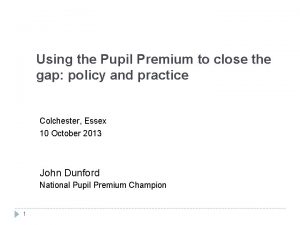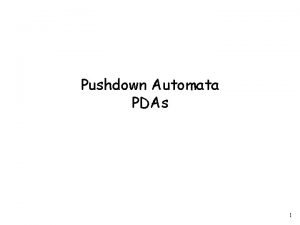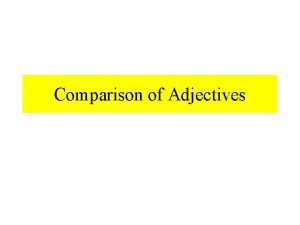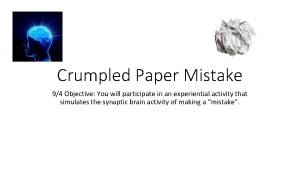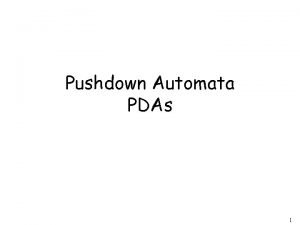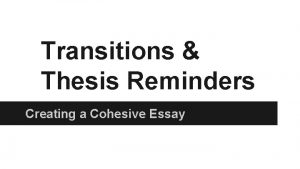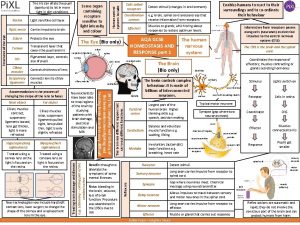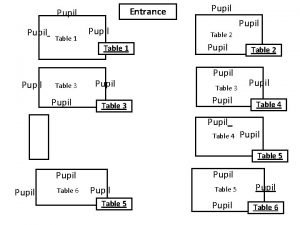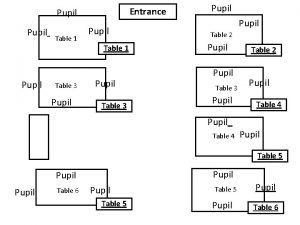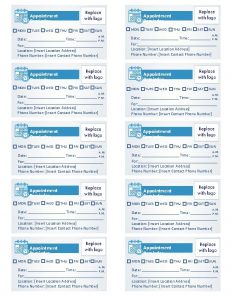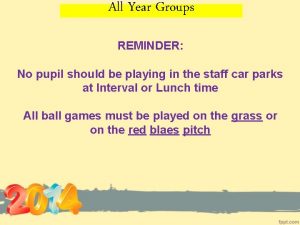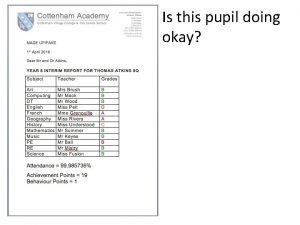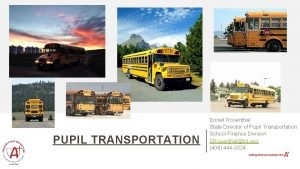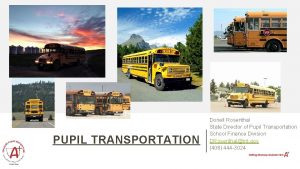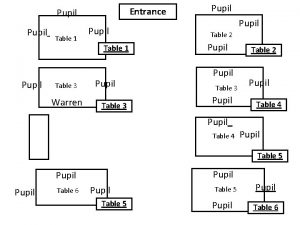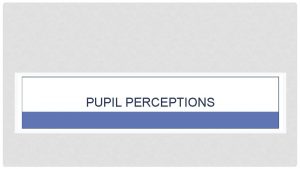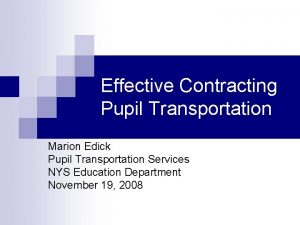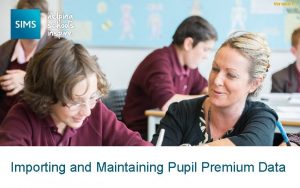Pupil Premium What is Pupil Premium a reminder























- Slides: 23

Pupil Premium

What is Pupil Premium – a reminder • £ 935 per year for each child registered as eligible for free school meals at any point in the last 6 years. • £ 1, 900 for pupils who are in local authority care or have been adopted

Why does PPR funding exist?

The problem On average, a disadvantaged pupil falls two months behind their peers for each year of their time at secondary school and, by the end of school, that disadvantaged pupil is almost two years behind.

The problem There has been some progress in reducing the attainment gap at primary school.

The problem The attainment gap at secondary school remains stubbornly large at 28 percentage points and has been the same for the past 20 years.

The problem - Summary Six out of ten disadvantaged young people do not gain five good GCSEs, compared to only a third of richer pupils. 42% of people without good GCSEs are in work compared to 66% of those with good GCSEs and 85% of people with a degree. On the current trend, it will take a staggering 50 years before the gap is closed and disadvantaged pupils achieve parity with their more affluent peers. Schools are not yet the engines of social mobility they should be.

Why do poor pupils do less well in school? Jot thoughts

Why do poor pupils do less well in school? Examples of Barriers Prior attainment Income and material deprivation Social and emotional needs Parental engagement Attendance Behaviour Literacy Motivation/Aspirations

Ofsted pupil premium: an update July 2014 What works The pupil premium: an update July 2014 Summary of 151 inspection reports

What works Most common uses of PPR • Additional staff, who deliver one-to- one support and small group tuition, English and mathematics booster classes, reading support • Employ 'learning mentors‘ • Enable pupils to participate fully in afterschool clubs, activities, educational visits and holiday sessions.

What works Difference between good and bad practice • Very little difference in the activities interventions used between schools • Funding is very carefully targeted at the types of activities that best meet the needs of their pupils, and are rigorously monitored, evaluated and amended. • Leaders identify their pupils' specific needs and interventions are individualised

What works

What works

What works What can we do in the classroom? "Our data shows it doesn't matter if you go to a school in Britain, Finland or Japan, students from a privileged background tend to do well everywhere. Your effect as a teacher is a lot bigger for a student who doesn't have a privileged background than for a student who has lots of educational resources. “ OECD (Organisation for Economic Co-operation and Development) 15

What works

What works

What works Meeting individual needs Which barriers can a school affect? School can affect School cannot affect

What works Meeting individual needs Which barriers can you affect in the classroom? I can affect I cannot affect

What works Meeting individual needs What can we do? Pick three barriers per table and consider practical ways of addressing these barriers

What can we do in the classroom • Know who these pupils are in your class and know their progress • Beware of the ‘soft bigotry’ of low expectations • If they are not making progress try something……

What can we do in the classroom

What can we do in the classroom
 Closing the gap pupil premium
Closing the gap pupil premium Thanks for the reminder.
Thanks for the reminder. Pda reminder 1
Pda reminder 1 I693 reminder letter
I693 reminder letter Adjectives for reminder
Adjectives for reminder Stir you up by way of reminder
Stir you up by way of reminder Pda reminder 1
Pda reminder 1 Sql reminder
Sql reminder Crumpled reminder activity
Crumpled reminder activity Computation symbol
Computation symbol Phytel appointment reminder
Phytel appointment reminder Cytosine
Cytosine Parallel episode in flowers for algernon
Parallel episode in flowers for algernon Binder reminder
Binder reminder Pda language
Pda language Reminder advertising examples
Reminder advertising examples Critical reminder
Critical reminder Cohesive thesis statement
Cohesive thesis statement Marcus gunn pupil causes
Marcus gunn pupil causes Average pupil size
Average pupil size Whirlpool archetype examples
Whirlpool archetype examples Adie's pupil
Adie's pupil Transparent layer that protects iris and pupil
Transparent layer that protects iris and pupil Pupil skalası
Pupil skalası
